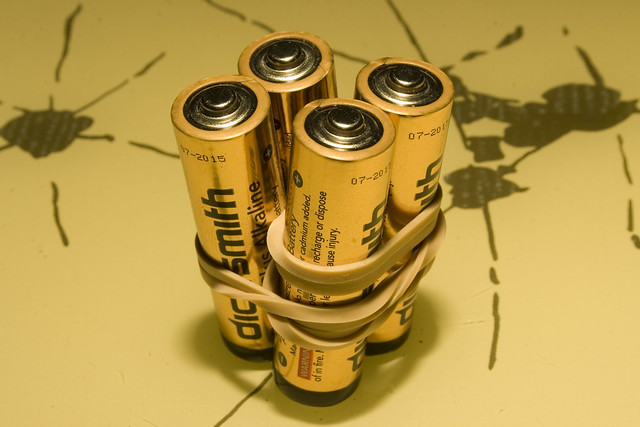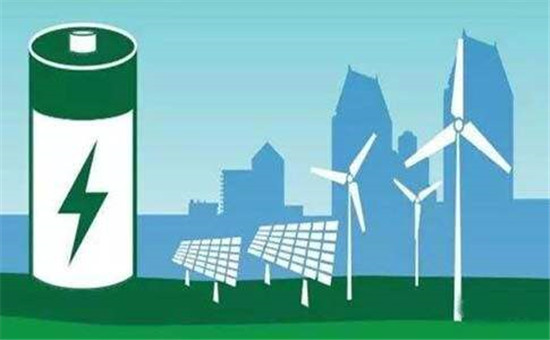18650 Battery Power Bank
Dec 10, 2019 Pageview:3283
The ability and use of digital products are increasing dramatically, and this is resulting in the frequent use of smartphones in various applications. As a result, the backup time of most batteries is becoming reduced. To this end, it will be nice to create a power bank for mobile phones as an emergency and spare charging source which can also be portable. In this article, we will discuss power banks and everything about them.
When working with lithium batteries, the protection circuits and the quality of the batteries are of crucial importance. But for 18650 cells, however, this risk factor is less when compared with pouch cells. There are few prefabricated modules available on the market that offers quite good protection.
Which battery is used in the power banks?
The type of batteries used in power banks is a matter of choice. Lithium-ion, 18650 and lithium-polymer batteries are the most common types of rechargeable cells used in the power banks we use today. Generally, lithium-ion cells are less expensive and have limited mAh capacity, but the lithium-polymer cells may be larger and have no memory effect as they are used over time.
Most of the large power banks make use of a 18650 battery.
These are batteries with a dimension of 18 mm in diameter and a height of 65 mm. Each of the batteries has a capacity of about 2500mAh. Therefore, the combination of these batteries in parallel means that the power banks will have a capacity of 5,000 mAh to 10,000 mAh or even more.
It is interesting to note that Tesla engines use a modified version of these batteries (having different dimensions) in the operation of their cars. This is why they have a custom battery factory which is called the Giga Factory, the length of which is more than the tallest building in the world.
However, the thinner and smaller power banks use lithium-ion or LiPo batteries. They certainly weigh less than the conventional power banks we use every day.
The batteries most common with mobile devices and used in power banks are rated in amp-hours and they are measured in milliamperes to obtain non-decimal numbers. The mAh classification indicates the capacity of the energy flow over time.
What are the advantages and limitations of the 18650 power bank?
The 18650 battery is a cylindrical battery that contains liquid inside of it. Because of the design and materials of the battery, the 18650 is mostly suitable for strong or high currents. This is why almost all laptops and electric cars are equipped with 18650 batteries. However, there are super-laptops not able to use 18640 batteries, because of their requirement for energy saving. They use lithium-polymer batteries instead.
The advantages of 18650 batteries include the following;
Large capacity
There’s typically a large capacity in the 18650 batteries. And most times, 18650 lithium battery is typically between 1200 and 3600 mAh, but the total capacity of the battery is only about 800 mAh. When your 18650 batteries are combined with other 18650 lithium batteries, the 18650 battery pack battery can easily exceed the 5000mAh point.
Long life
18650 batteries are known and loved for their long life. The long service and cycle life can reach over 500 times when used normally, which is more than two times the regular value of a normal battery.
High-security performance
The 18650 lithium batteries offer a high safety performance, and there are almost no explosions, no combustion; non-toxic, environmentally friendly and also RoHS certified. You enjoy various kinds of security performance all in one place. The number of cycles as well is over 500 times; The high-temperature resistance is also good; the discharge efficiency is up to 100% which is impressive.
High voltage
The 18650 lithium battery voltage is typically 3.6V, 3.8V, and 4.2V, and that is much higher than the 1.2V voltage for NiMH and NiCd batteries.
No memory effect
When using 18650 batteries, you do not have to empty or drain the remaining energy in the battery before recharging your power bank, this makes it even more convenient to use, and to also store power.
There are quite a few limitations for using 18650 batteries too. One of them is that;
18650 batteries may make use of more connections, and this will increase the system impedance and also increase the risk of a bad connection.
For a low energy consumption cell, more and more parallel lines are needed to achieve higher energy consumption.
It is very difficult and expensive to set up an active balance of individual cells.
It is difficult and expensive to monitor the SOH (state of health) of a single cell.
There’s a volumetric disadvantage. Since the cells are cylindrical, they cannot be packaged tightly and therefore use up more space.
Can you DIY a 18650 battery power bank?
Yes, it is very possible to DIY a 18650 power bank. This is mostly possible when you have all the required components needed to make the power bank.
Required components:
18650 lithium battery cell
TP4056 module with a battery protection circuit.
3V to 5V boost converter with a 1A current adjustment
slide switches
The name 18650 is a term used to describe batteries that have a cylindrical shape with a diameter of 18 mm and a height of about 65mm, so the name is a result of the cell size and dimension. These cells are also available in different and corresponding capacities depending on the applications. These are rechargeable cells with a 3.7 V output.
The method of charging a single lithium-ion cell requires two-stage
Constant current (CC)
Constant voltage (CV)
During the constant charging stage, the charger must provide a constant current with an increasing voltage up to the voltage limit. Then, apply a voltage corresponding to the maximum limit of the cell during this time, the current falls constantly to the lowest current threshold (which is about 3% of the constant current). All these are operations performed by the TP4056 module, an extremely reliable and economical option.
Module TP4056A
It is a low-cost charging solution for charging any lithium-ion or 18650 mobile batteries, etc. The Micro-B connector and easy-to-adjust 1A output current control ensure this is a reliable option for charging low capacity batteries. You can connect this module to a wall socket or USB to micro B cable. It consists of an integrated PMOS switch architecture, which reduces the total number of additional components.
This module also comes with two indicators: these are the red LED (L1) indicator, which indicates the current charging condition. The blue LED (L2) indicates that the charging process is complete.
- Prev Article: LiPo Battery Life Expectancy Analysis
- Next Article: Is it difficult to connect 18650 batteries?
Leave Message
Hottest Categories
-
Hottest Industry News
-
Latest Industry News












